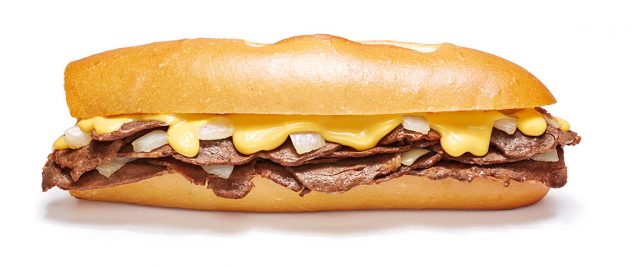At the start of the COVID-19 pandemic, restaurants across the United States were forced to rely on food delivery services to keep their doors open largely due to social distancing and shelter in place orders. While food delivery was already a highly successful industry, growing 300% faster than dine-in traffic, delivery and takeout became a necessary lifeline for restaurants looking to stay open through the pandemic. As a result, first six months of the pandemic, the four major food delivery services, GrubHub, Doordash, UberEats, and PostMates, made roughly $5.5 billion in combined revenue, more than twice as much as their combined income of 2.5 billion during the same period in 2019.
Geno’s Steaks, home of the best Philly cheesesteak in Philadelphia, was one of many Philly restaurants to utilize food delivery services throughout the pandemic and has since expanded their delivery operation up to 60 miles from their Italian market location. Although Philadelphia has largely lifted COVID-19 restrictions, Geno’s Steaks has noticed very little change in the number of online orders they receive each day. Although Philadelphians now have more options in regards to eating out, restaurants across Philadelphia have found that many Americans still enjoy the convenience that food delivery allows.
In the first few months of the COVID-19 pandemic, when American unemployment reached an all-time high, many believed that the restaurant and service industry would suffer due to Americans lacking disposable income. However, experts found that while many Americans only felt comfortable eating at home, many continued to prefer eating meals from local restaurants rather than home-cooked meals. Within the past year, online orders for home delivery have more than doubled in the United States, Canada, and Russia and increased by 30% in France, Germany, and Spain. Even before the pandemic, Frost & Sullivan estimated that the food delivery industry would gross 82 billion by the end of the year and more than double by 2025, a cumulative growth rate of 14%. With restaurants now allowing in-dining options, many experts wonder if customers will continue to prefer delivery options. To answer this question, businesses must first take a look at existing data regarding food delivery services and consumer preferences.
Smart Phone Users
One of the biggest factors that has contributed to the boost in online food delivery services has been the increase in smartphone users. Today, smartphone users are the primary online shoppers for the food and beverage industry, and the recent increase in the number of smartphone users potentially reflects an even greater increase in online food delivery. In 2019, the number of food and beverage e-commerce users reached an impressive 1.5 billion users out of 3.2 billion smartphone users, nearly half. This number was expected to grow by 800 million by 2024, however, thanks to the COVID-19 pandemic, many experts believe that this number will be reached within the upcoming year.
Consumers Primary Motivation
To fully understand how the increase of food delivery services will impact the food and beverage industry, restaurants must first understand the primary motivation behind customers ordering food delivery. According to a survey conducted by the National Restaurant association in 2019, 60% of Millennials want restaurants to use technology to make ordering and delivery more convenient in the future. Within the past twenty years, the average time Americans spend at work increased, and today, the majority spend roughly one hour a day commuting to and from work in addition to their eight-hour workday. After a nine-hour workday, many individuals do not have the energy to cook for themselves after returning home. Today, 87% of Americans who order food delivery using apps or online sites say they do so because it simplifies their lives. The main takeaway from this trend is that convenience is the most important factor for consumers regarding food delivery. Food delivery provides consumers with a simple ordering process and speedy delivery of their favorite food items from local restaurants and businesses. This is good news for restaurants that offer delivery, as roughly one in five consumers spend more on off-site orders than they do during indoor dining experiences.
Customer Behavior
Of the thirteen percent of Americans who do not utilize food delivery services, 31% say they would order food online if a delivery service could guarantee fast delivery, 28% said they would order food online if the service offered low order minimums, and 26% said they would be motivated to try a service if they offered first-use coupons. Those who do use food delivery services show similar motivations to those who do not, however, very unique customer behaviors. According to multiple surveys, the most prominent behaviors of food delivery customers include:
Delivery Speed: The speed of food delivery is the biggest factor regarding customer satisfaction, with 60% of consumers across various markets citing it as a key factor. Consumers cited the optimal wait time as no more than 60 minutes.
Eating at Home: The majority of online food orders (82%) are placed within the home, while only 16% are placed from the workplace.
Weekend Spike: Restaurants across the country report that the highest-volume days for their online food orders were Friday, Saturday, and Sunday, when more than 70% of orders were placed.







